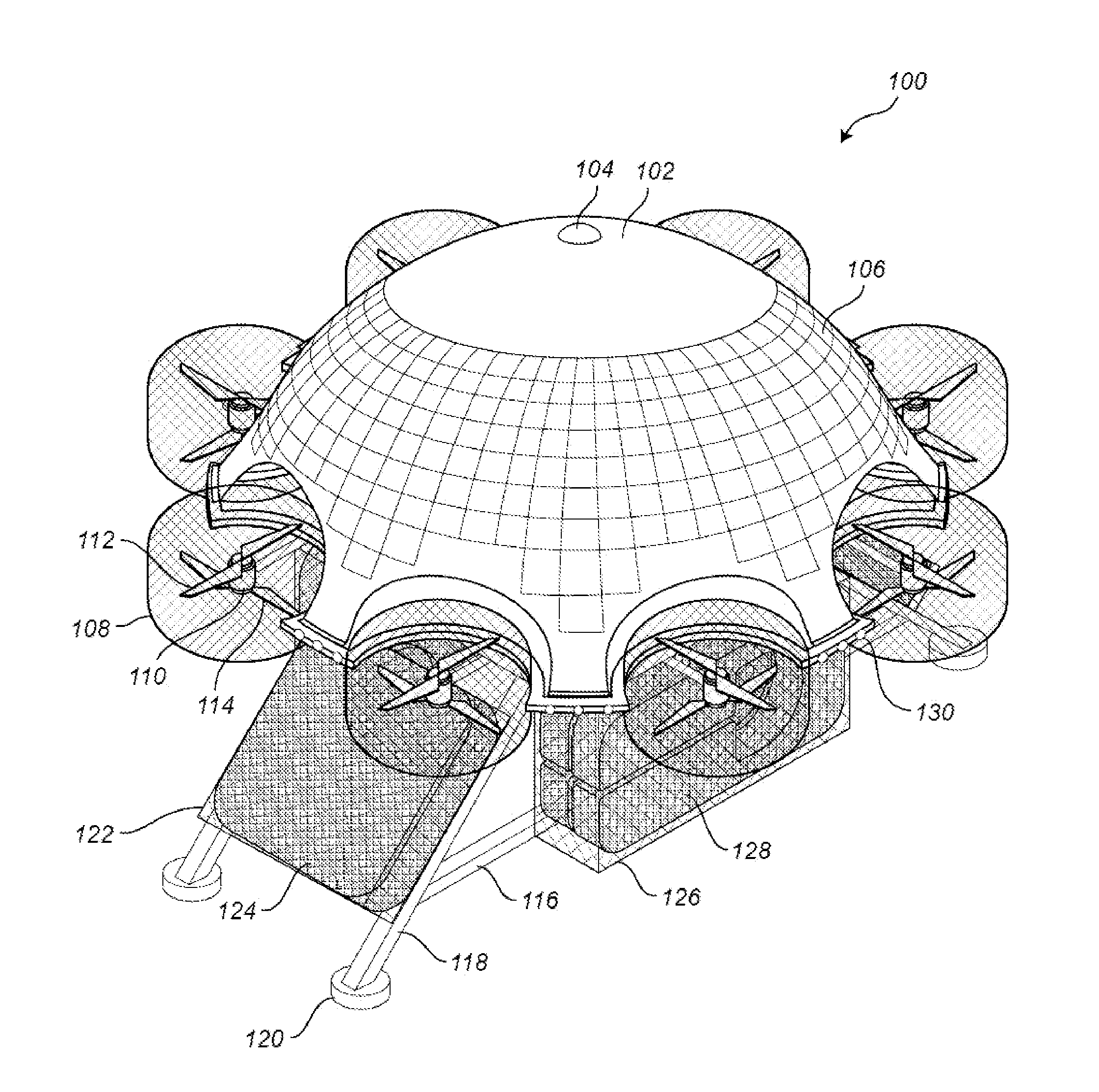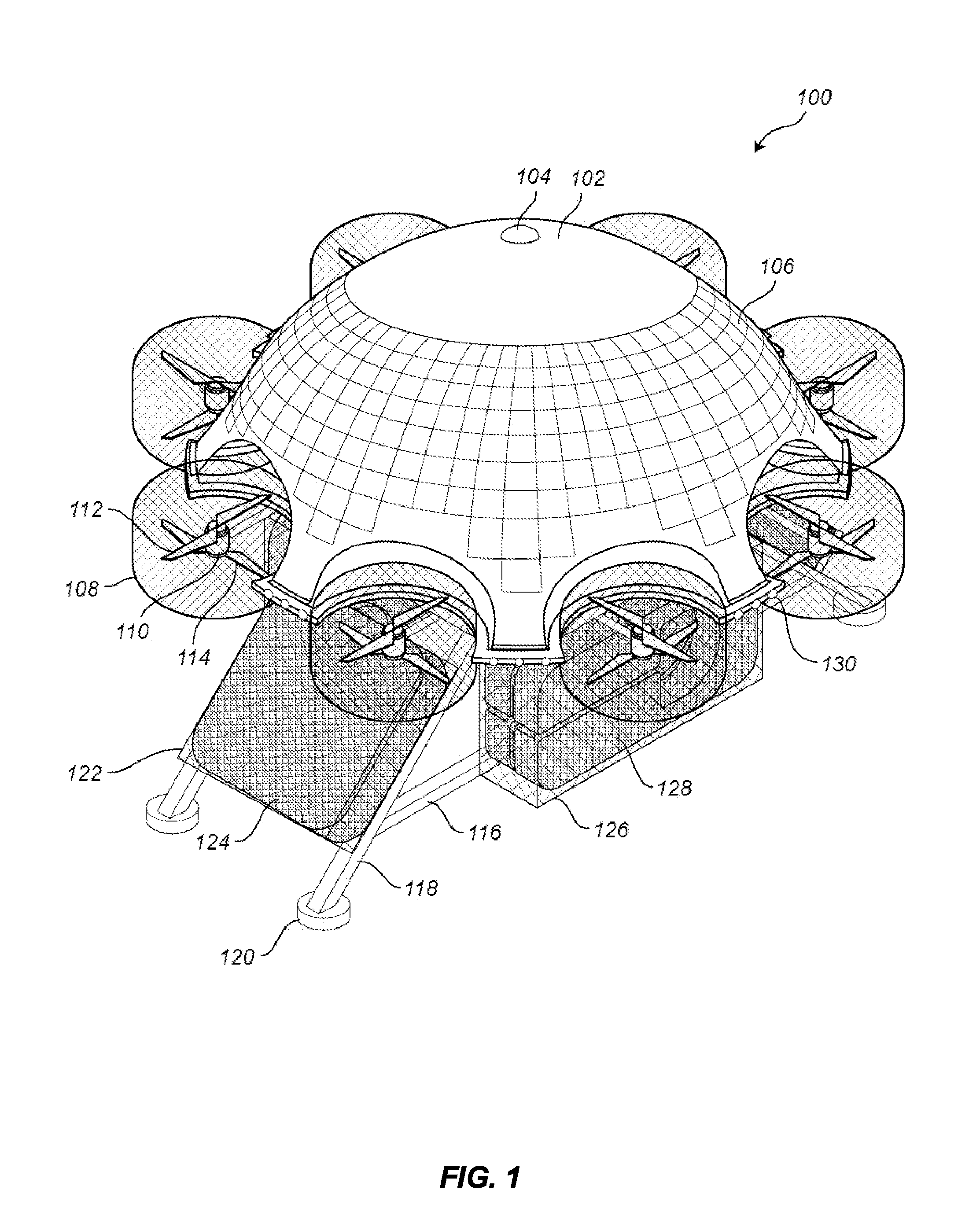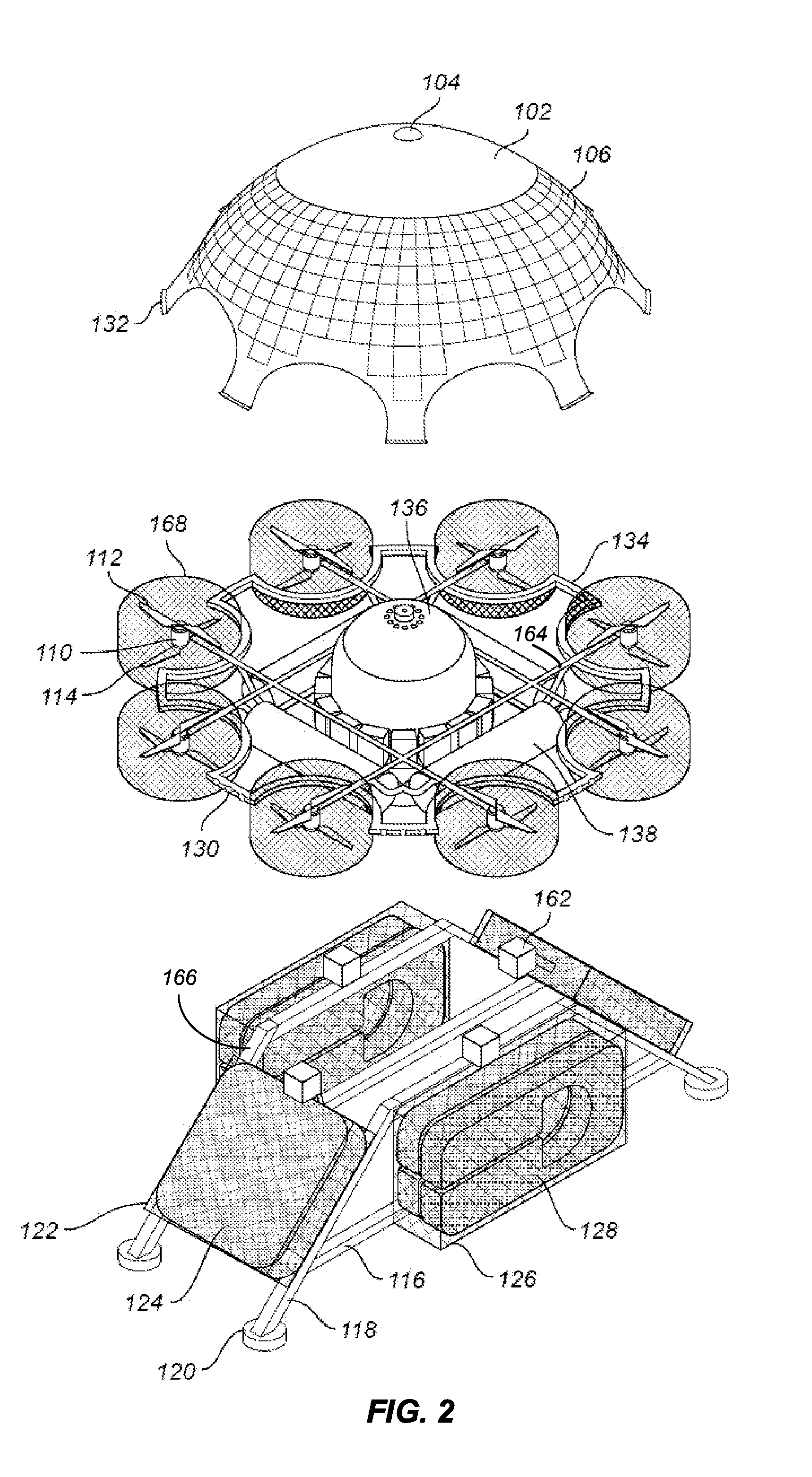Unmanned aerial rescue system
a rescue system and unmanned technology, applied in the direction of energy-saving board measures, launching weapons, transportation and packaging, etc., can solve the problems of requiring maintenance and operation personnel, high acquisition cost, and high operating cost of traditional aerial vehicles, such as helicopters, airplanes,
- Summary
- Abstract
- Description
- Claims
- Application Information
AI Technical Summary
Benefits of technology
Problems solved by technology
Method used
Image
Examples
Embodiment Construction
[0030]Embodiments disclosed in this application relate to unmanned aerial rescue systems. Generally speaking, unmanned aerial rescue systems are remotely or autonomously controlled flying vehicles or platforms capable of providing and deploying different forms of rescue equipment and assistance to individuals in need of assistance.
[0031]Embodiments of unmanned aerial rescue systems may comprise several components, including, for example: a frame or chassis, a landing member (e.g. landing leg), a control system, a propulsion system (e.g. a motor and propeller assembly), a propulsion system support member (e.g. a frame extension arm), a propulsion system orientation mechanism (e.g. a gimbal), a propulsion system shield (e.g. a mesh rotor shield), a sealed equipment container, a cover or shroud, an equipment carrier, an equipment release mechanism, a navigation system, a sensor system, a sound system, a light system, a data communication system, an emergency equipment system, and a pow...
PUM
 Login to View More
Login to View More Abstract
Description
Claims
Application Information
 Login to View More
Login to View More - R&D
- Intellectual Property
- Life Sciences
- Materials
- Tech Scout
- Unparalleled Data Quality
- Higher Quality Content
- 60% Fewer Hallucinations
Browse by: Latest US Patents, China's latest patents, Technical Efficacy Thesaurus, Application Domain, Technology Topic, Popular Technical Reports.
© 2025 PatSnap. All rights reserved.Legal|Privacy policy|Modern Slavery Act Transparency Statement|Sitemap|About US| Contact US: help@patsnap.com



